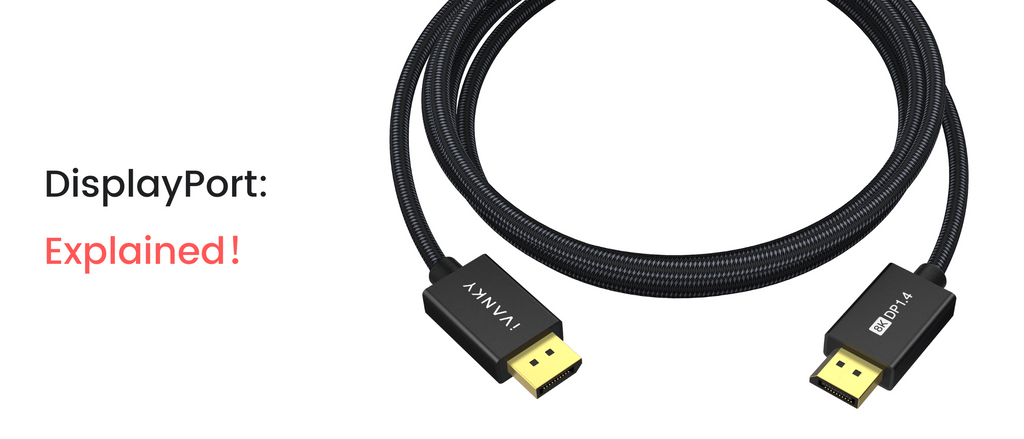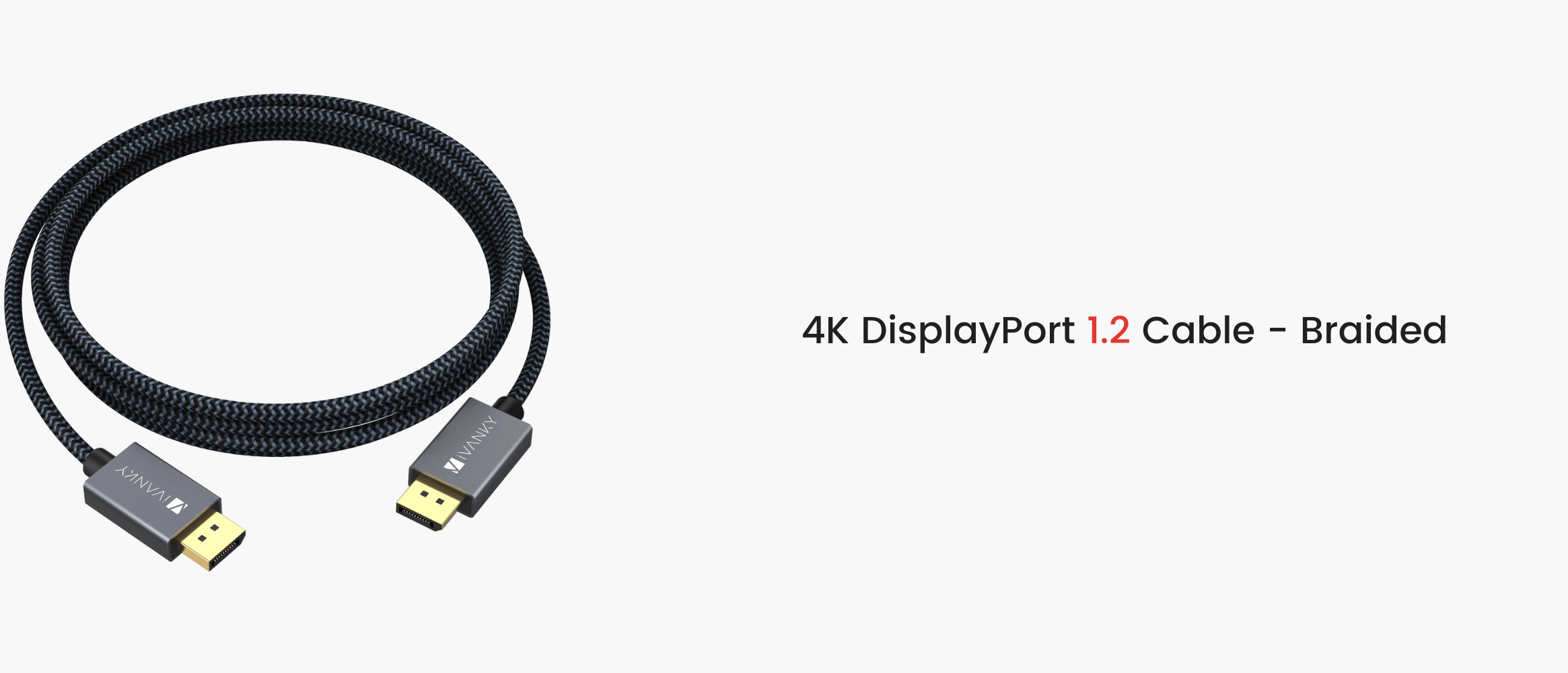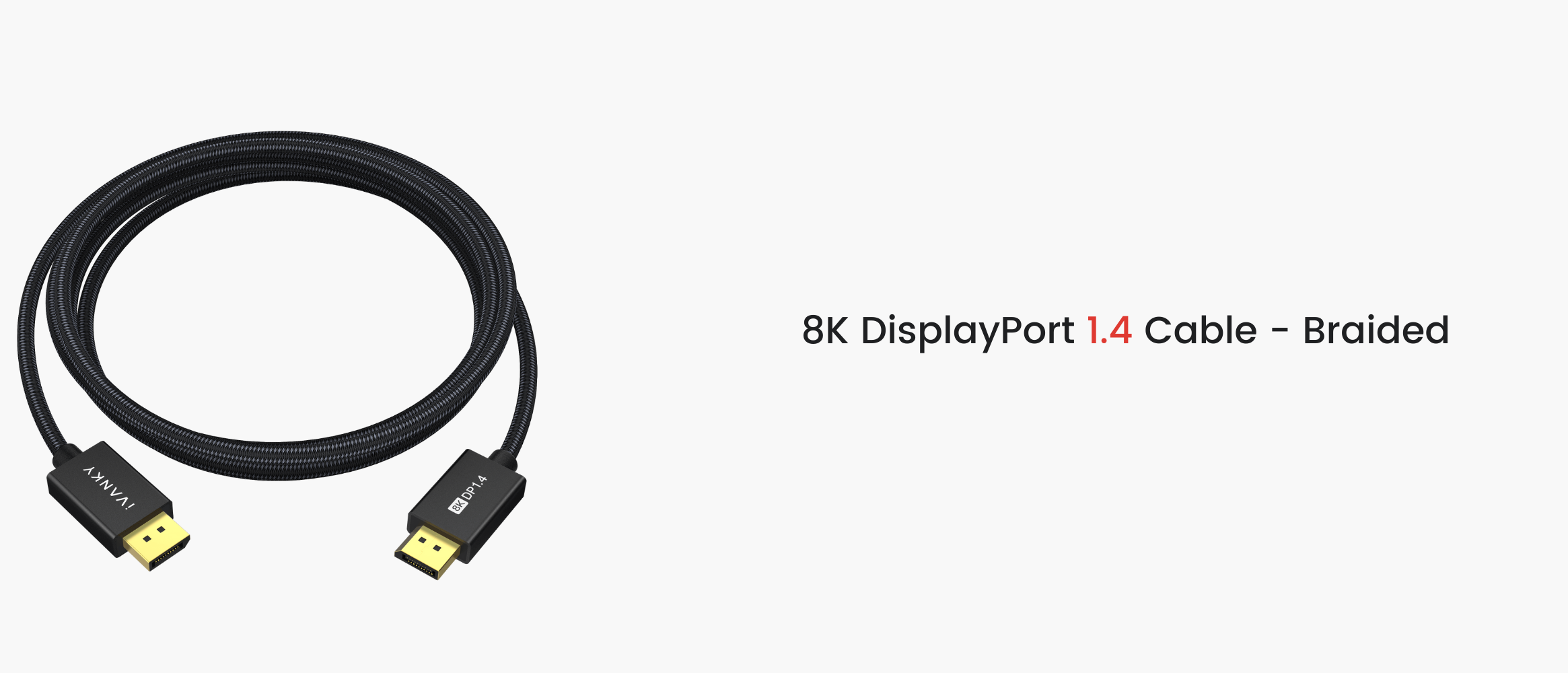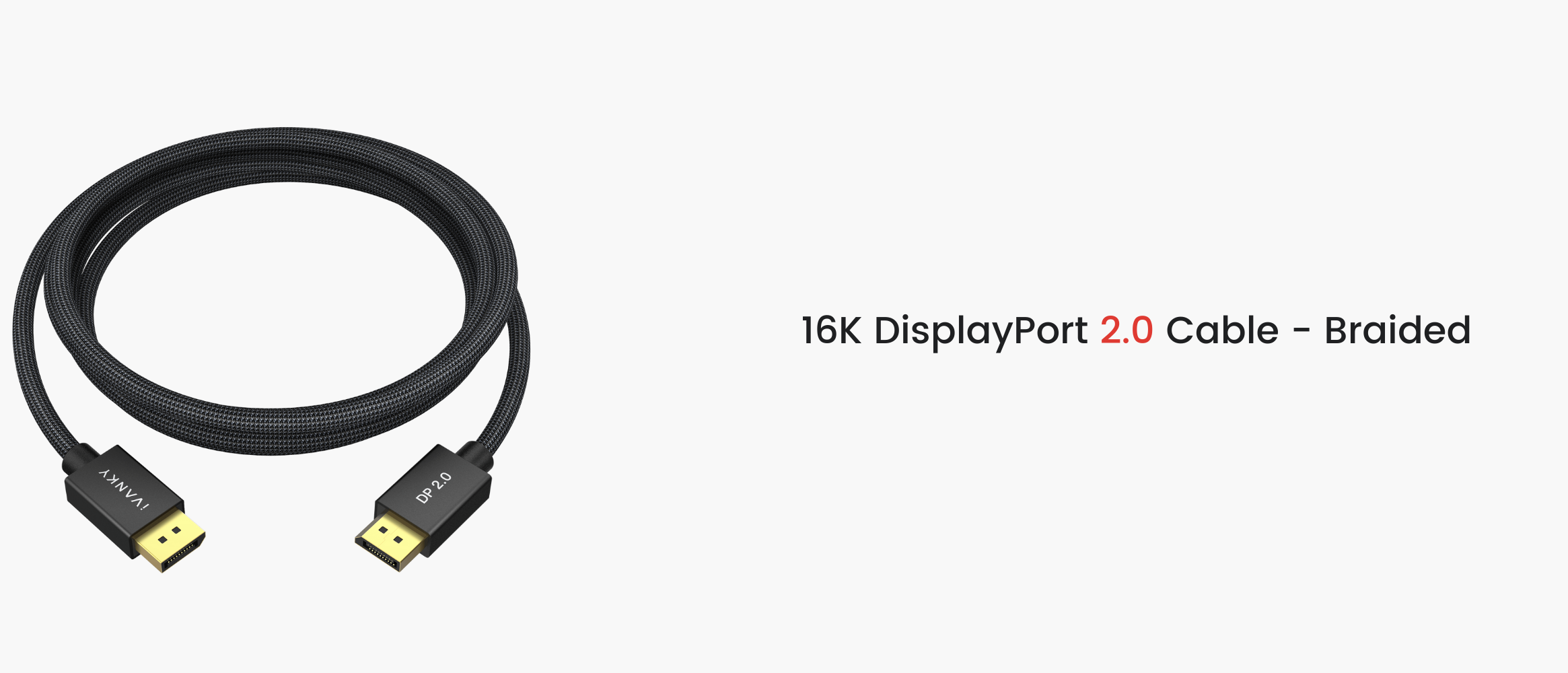What's a DisplayPort Cable?
DisplayPort: Explained!
After introducing HDMI, today we are going to share with you some information about DisplayPort. Although DisplayPort is not as well-known as HDMI, its performance and utility are on par with it, so it's definitely worth checking out!

DisplayPort is the digital video interface standard promoted by VESA, which was first seen in public in May 2006. The DisplayPort interface is intended to replace the old VGA, DVI, and other interfaces, enabling people to enjoy a clearer picture and higher sound quality. Following this, you will gain a deeper understanding of what DisplayPort is all about.
Interested to know more about the history of the DisplayPort?
Decades of technological development have led to DP. If HDMI can have an association of its own, then why doesn't the same exist for DP? Whenever we buy DisplayPort, retailers often use the term "VESA Certified DisplayPort" to attract customers. However, what does VESA mean?

VESA stands for Video Electronics Standards Association, which is the international association responsible for developing DisplayPort. It was also co-founded by several industry giants, including Apple, AMD, Qualcomm, Intel, NVIDIA, LG, and others.
VESA contributed greatly to the advancement of industry technology and standards. In addition to the DisplayPort standard, they have their own DisplayHDR standard and audio standard as well.

There is no doubt that HDMI is a major competitor of DisplayPort. Remember the HDMI monopolization we discussed earlier? You'll have to pay for an HDMI port on your monitor! Under these circumstances, VESA did not remain silent. VESA announced to customers: "Hey! Don't worry about it! My product is accessible to everyone! We do exactly the same as HDMI, and the best part is you don't have to pay anything!"
As a result, DisplayPort had a lower entry barrier and quickly gained traction in the video interface market by surpassing HDMI in terms of performance.
Why is DP necessary?
HDMI and DP ports are both used to transmit audio and video signals, primarily to connect computers to monitors or home theatre systems. Hence, most monitors come with both HDMI and DP interfaces.

It is common to see people asking, "Is DisplayPort audio compatible?" No doubt, the answer is yes. Without audio, it is impossible to compete with HDMI.
What is the difference between HDMI and DisplayPort cables?
Considering that they function almost identically, users are curious to know how the two can be distinguished. There are three main differences: their shapes, bandwidth, and audio features.
Shapes and pins

To distinguish different interfaces, it's best to look at their shapes. As shown above, the 20 pins standard DisplayPort connector comes in different shape than the 19 pins standard HDMI connector. Both DisplayPort and HDMI are available in various sizes and shapes like mini DisplayPort and mini HDMI, the miniature version of the standard ones. Interestingly, the Mini DP was promoted by Apple in 2008 (which they named it the Thunderbolt 2), so it can be found on many Macintosh models.

Bandwidth
DisplayPort cables can achieve higher bandwidth than HDMI cables. When the cable has higher bandwidth, more signals can be transmitted simultaneously, thus you can see a more clear and more smooth videos on your displays. Here’s a chart of the major DisplayPort and HDMI revisions, and their maximum transmission rate.

Audio Features
Both HDMI and DisplayPort support audio transmission. The main difference is that HDMI supports Audio Return Channel (ARC). If you want to connect a TV and a home theatre system, this is an extremely useful feature. It allows you to transmit the sound from the TV to your home theatre.
How far can a DisplayPort Cable go?
The DisplayPort standard doesn’t really define a maximum cable length. We don’t find it common that the display and the source are further than 2 meters apart in the setups. But if you do need to go for longer distance, you can rely on an active DisplayPort cable.
Are there any noteworthy DisplayPort versions?
While HDMI continues to advance its performance, DisplayPort has also gone through more than ten years of technological development. We will not talk about them one by one here, rather, we'll focus on two key versions. They are DP 1.2 and DP 1.4.
DP 1.2
In December 2009, DP 1.2 was released. Its main performance specifications are:
- Support 4K 60Hz video transmission for the first time.
- Support up to 165Hz screen refresh rate under 2K resolution.
- Support 3D display technology, can display up to 120Hz 3D video content at 2K resolution.
- Support 3D audio technology such as Dolby MAT, DTSHD.
- Support MST Daisy Chaining multi-screen display technology.
- 4K 60Hz
Those of you who have read our HDMI blogpost may recall that in 2009, HDMI 1.4 was also released. At that time, it supported a 4K video transmission for the first time, but only at 24FPS.
The DP 1.2, on the other hand, also supports a 4K video - but in a smooth 60 FPS. In other words, DisplayPort has superior performance compared to HDMI.
- 2K 165Hz
For gamers, high refresh rate means a lot to them. With higher refresh rates, the graphics will be smoother, and various moves will be easier to achieve in the game.

Meanwhile, HDMI 1.4 only has a refresh rate of 75Hz at the same 2K resolution, less than half of what DisplayPort can offer. Despite HDMI's popularity, DisplayPort is the better choice for aspiring gamers. Thus, DisplayPort 1.2 cables have gained a reputation for being a great option for gamers.

Most professional game graphics cards on the market will feature a DP interface. The GTX 3080 features up to three DP ports, whereas it only has one HDMI port. This indicates the huge significance of the DP interface to gamers.
MST Daisy-chaining Technology
This topic has a lot of details to cover, so we're going to devote a separate article to it. Stay tuned!
DP 1.4
In March 2016, VESA Association brought us the DP 1.4, which significantly improved the performance of the protocol:
- Higher resolution: support 8K (7680 x 4320) @ 60Hz videotransmission.
- Better gaming experience: supports 144Hz screen refresh rate under 4Kresolution.
- MST evolution: it can output two displays with resolution up to 4K at the sametime.
- Others: support 32 channel audio transmission, FEC compression technology, and HDR META transmission technology, etc.
Once again, HDMI is outperformed by the DisplayPort. HDMI only featured 8K video support in the 2.1 release in November 2017, more than a year and a half later than DisplayPort.
Following the trend, iVANKY has also launched DP 1.4 compliant cables. However, this is way ahead of the market demand. Today, users are already required to purchase a membership to watch 1080P videos. Thus, 4K and 8K videos are far beyond their needs. So, the main attraction point of DP1.4 is to meet the needs of game players by meeting their resolution and refresh rate requirements simultaneously.
In this article, we also compared the specification differences between HDMI and DP cables. After reading it, I believe you will be more able to know the cables you want to buy.




